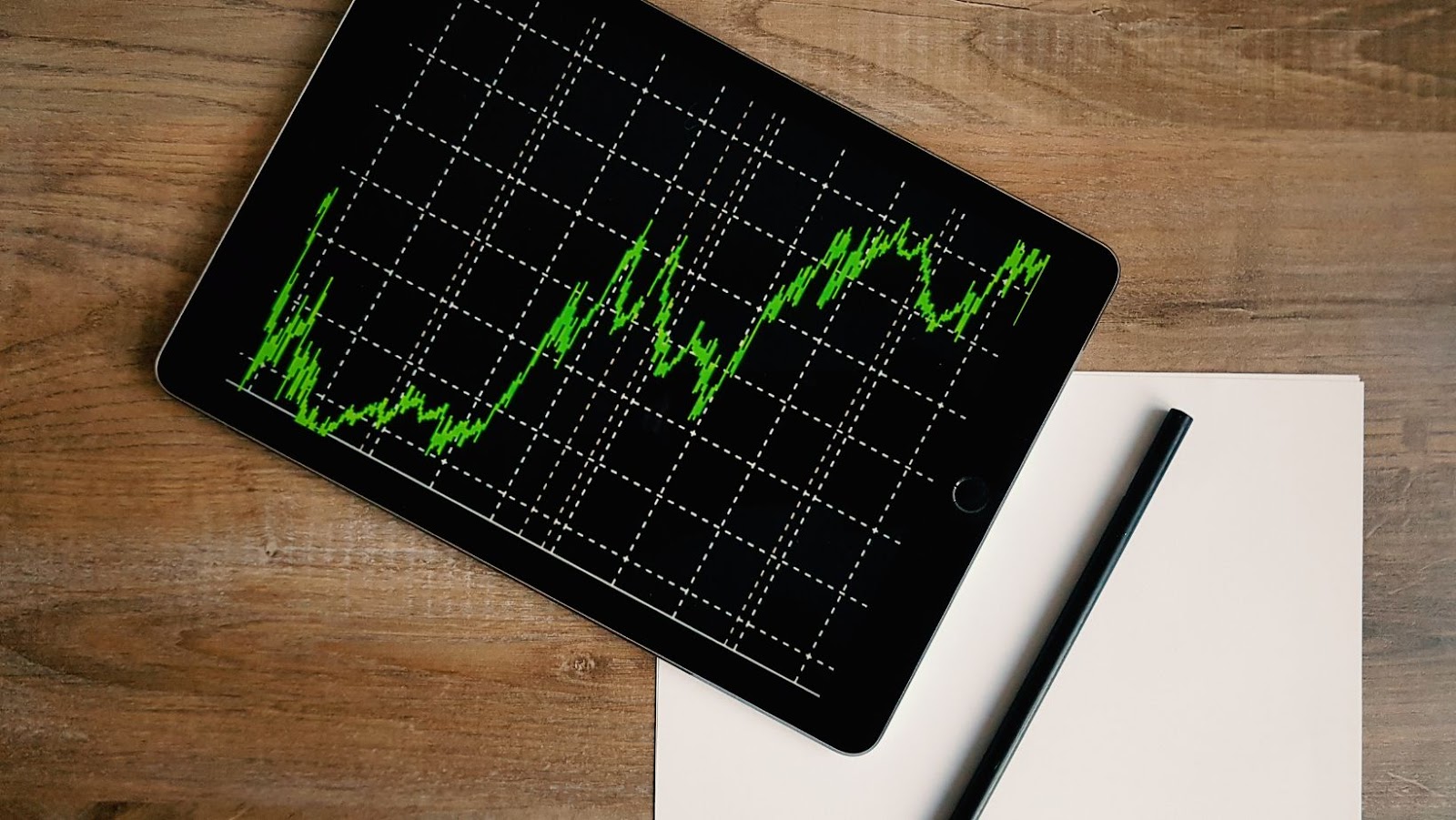Berkshire Hathaway Inc. is a holding company with a range of subsidiaries engaged in numerous industries, including life insurance and reinsurance, freight rail transportation, retail and apparel businesses, utilities and energy companies, industrial product manufacturing businesses, financial services businesses as well as services for private equity investments and securities trading. Hathaway reported a revenue of $247.80 Billion in 2017. The stock symbol for Berkshire Hathaway is BRK-A (NYSE). The current stock price for Berkshire Hathaway is $317600.00 per share as of September 24th 2018. The 52 week high for the stock is $326200 and the 52 week low is $277000. The company’s market cap (the total value of its outstanding shares) was recently calculated at nearly $520 Billion dollars.
Like many other stocks in the market today, it’s important to closely monitor trends which can often drastically affect company share prices over short periods of time.
Overview of The Stock Market
The stock market is an essential aspect of any company’s financial strategy. This is because it allows companies to raise funds in the public market, by then selling shares to potential investors. The stock market also provides current shareholders with the liquidity they need to buy and sell shares of a company’s stock on a regular basis. When investing in stocks, one of the most important things to consider is the price per share that you are paying for the stock. This is typically measured as either a “bid” or “ask” price, which can be found on all major exchanges such as NASDAQ and NYSE. Generally speaking, if you want to purchase stocks at the lowest possible price, then you should consider buying at the “bid” price; conversely, if you are looking for a quick sale then you should look for stocks with an “ask” price higher than its bid price.
In addition to measuring a stock’s bid or ask prices, investors can usually view other important information related to the company such as: its dividend yield; its average daily volume (or how many shares have recently been traded); its earnings per share; and its book value (the difference between a company’s assets and liabilities). All of this information can provide investors with valuable insight into whether they should buy or sell a particular stock.
When it comes specifically to Hathaway, this corporation operates through five different business segments:
- Agriculture
- Apparel
- Consumer products
- Financial services
- Investments
As of February 2021, Hathaway’s total asset value was worth $364 billion dollars with more than half held in cash equivalents (cash plus short-term securities). The corporation has reported quarterly earnings slightly below estimates in two out of four quarters since August 2020 but has maintained strong year-over-year growth across each segment throughout 2021 so far. Finally, Hathaway’s current common share price sits just above $336 including dividends and splits as of April 2021 – although it reached highs closer to $400 back in January before dropping rapidly during March due to market volatility from COVID-19 concerns.
Hathaway Stock Price is Too Computers
Hathaway Inc., a world-leading computer manufacturing company, has seen an impressive rise in its stock prices over the past few years. The stock price of Hathaway Inc. has been on the rise since it went public in 2019, seeing some major fluctuations and jumps in price.
In this article, we will discuss:
- the current stock price of Hathaway Inc.
- what has been driving the price.
- predictions for future movements.
Current Stock Price
As of August 24th, 2020, the current stock price for Hathaway (BRK.A) is $301,800 USD per share. Hathaway is a multinational conglomerate based out of Omaha, Nebraska and offers investors a variety of opportunities. It has strong financial results as well as a long-term outlook that makes it one of the most desired investments on the market. The company’s last dividend was paid out in February 2020 at $1402.50 per share for shareholders who owned shares on October 10th, 2019. This was an 8% increase from their previous payout and true to their commitment to create value for shareholders through dividends and other efforts. Hathaway also offers investors other avenues of capital gain such as stock appreciation or through more risky strategies like options trading or futures trading. These can be more volatile but come with a potential reward if executed correctly. In addition to stock appreciation, Hathaway has an impressive track record when it comes to mergers and acquisitions which can offer return in terms of direct capital gains plus any benefits that may result from such activities such as exposure to new markets or resources; thus providing investors opportunity for greater returns over time than strictly holding shares alone would provide.
Historical Stock Prices
Hathaway (NYSE: BRK.A & BRK.B) is a diversified holding company that focuses on long-term investments and operating companies. The company is run by Warren Buffett, who is renowned as one of the most successful investors in the world. Hathaway has a long history of delivering superb returns to its shareholders and has become one of the largest public companies in the world.
Investors interested in purchasing Hathaway stock can do so through any major stock exchange, including NYSE Euronext and Nasdaq. Investors should note that Hathaway trades two classes of its common shares, “A” shares (BRK/A) and “B” shares (BRK/B). Class A shares are more expensive as they have more voting rights than class B shares. While classes A and B have historically traded at slightly different prices, their prices tend to move in tandem with each other over time.
In order to determine the historical stock price for Hathaway, investors can look up previous closing prices for both A & B share classes on any financial website or platform that provides pricing data for publicly traded companies. Investors should be aware that daily trading volume is often very low for both BRK/A & BRK/B shares; therefore large price fluctuations from day-to-day can often occur based on relatively small trades executed by market participants.
Factors Influencing Stock Price
The stock price of Hathaway is dependent upon a variety of factors, including economic conditions in the global economy, the company’s performance in the marketplace, and various macroeconomic forces. These factors are not always equal and come into play at different times or in distinct combinations—meaning the stock price of Hathway can be significantly impacted by one factor over another. In general, stock prices are shaped by both financial markets and real-world events. This includes changes in a company’s performance (e.g., increased profits or sales), changes to its dividend payments, expansion into new products or services, shifts in the competitive landscape, and any other developments that have an impact on Hathaway’s prospects. Additionally, investors must take into account macroeconomic fluctuations that may influence the broader markets; such as inflationary pressures, interest rate fluctuations (which influence debt repayment costs), changes in unemployment levels or purchasing power levels among consumers—all of which can affect Hathaway’s profitability over time.
Beyond these real-world considerations, investors should also analyze financial market data related to Hathaway to develop a better understanding of how it has been trading relative to its peers and on a larger scale as well. These include looking at share volume (i.e., how many shares were traded during the latest period), liquidity ratios (showing how easy it would be for investors to buy or sell large amounts of shares without causing major fluctuations in their share price), volatility scales (used to measure a security’s expected rate of return given its risk profile) and several other more technical measures that help buyers assess whether they believe Hathaway is undervalued relative to other stocks with similar profiles.
Analyzing Hathaway Stock Price
Hathaway is a leading multinational conglomerate with interests in multiple industries. It is one of the most prominent companies in the world and has seen a steady rise in its stock prices over the past few years. In this article, we’ll be taking a look at Hathaway’s stock price, analyzing the current trends and offering some insights into the potential future of the stock.

Analyzing Financial Reports
Analysis of the financial reports for Hathaway is essential for understanding its stock price. Financial statements provide investors and analysts with information about how a company is performing financially, and are used for decision making by other stakeholders such as creditors and potential investors. A thorough analysis of a financial report provides an insight into how efficiently a company generates income from its resources, how it is managing its future liabilities (debt) and assets, and the overall financial health of the company. To analyze Hathaway’s financial reports, investors must consider both the past performance of the business (for example, historical stock prices) as well as trends that may have an impact on future performance (such as upcoming merger activity). Investors should pay close attention to Hathaway’s revenue sources as well as its operating expenses; this will help them gain insight into what drives revenue growth or decreases in profits. Investing in stocks can be quite risky since share prices can fluctuate drastically depending on news or events related to the company, so it’s important to understand the fundamentals behind stock price changes before deciding to buy or sell shares. Additionally, looking at ratios such as debt-to-equity could also be helpful in determining whether a stock may be undervalued or overvalued relative to current market conditions.
Analyzing News And Events
News and events can have a major impact on the stock price of Hathaway and other companies. Paying attention to the news regarding Hathaway and any other company you are considering investing in, can give insight into future potential price movements. It’s crucial to take the time to research news related to a particular stock before investing in it.
Some of the most influential trends that can affect Hathaway stock prices include:
- Financial performance, such as earnings reports, changes in management or key personnel, industry developments or competition that could affect Hathaway’s competitive position, reactions to company product launches or failues and legal decisions.
Understanding current Hathway news summaries is an important step in analyzing its stock price. Additionally, careful review of economic shifts and indicators such as GDP growth, employment rates and consumer spending can provide insight into how investors may react when they observe changes deeming these factors important. Investors should also track analyst opinion because analysts are usually well-versed in analyzing stocks and provide invaluable advice on both short-term buy recommendations based on current market conditions and set long-term goals based on research of underlying economic forces affecting the entire industry segment. Seeking multiple sources for reliable investment advice is encouraged when researching any data related to stock prices like those of Hathaway.

Analyzing Technical Indicators
Analyzing the performance of Hathaway stock price can be done through the use of technical indicators. Technical analysis is a way of evaluating stocks and other securities by analyzing past market data, primarily through the use of charts, to identify patterns and trends that might suggest future movements in the market. Technical indicators are mathematical calculations based on a company’s stock prices and volume data. These calculations can be used to anticipate short-term movements in a security’s price, as well as its overall direction. Technical indicators are classified into two categories: those indicating bullish behavior and those indicating bearish behavior. Bullish behavior points to buying opportunities while bearish behavior points to selling opportunities. Popular technical indicators used when analyzing Hathaway stock include moving averages (MA), relative strength index (RSI), on-balance volume (OBV), Bollinger bands, stochastics, moving average convergence/divergence (MACD) and Fibonacci retracements. Many investors use multiple technical indicators at once in order to form a more complete picture of a security’s potential trajectory. Analysis of Hathaway’s technical indicators might offer insight into important trends in its stock price over different timeframe periods. Knowing the historical trend may provide key information for understanding any current or prospective changes in its stock price, helping an investor make sound decisions about when to enter or exit positions in Hathaway’s equity market action.
